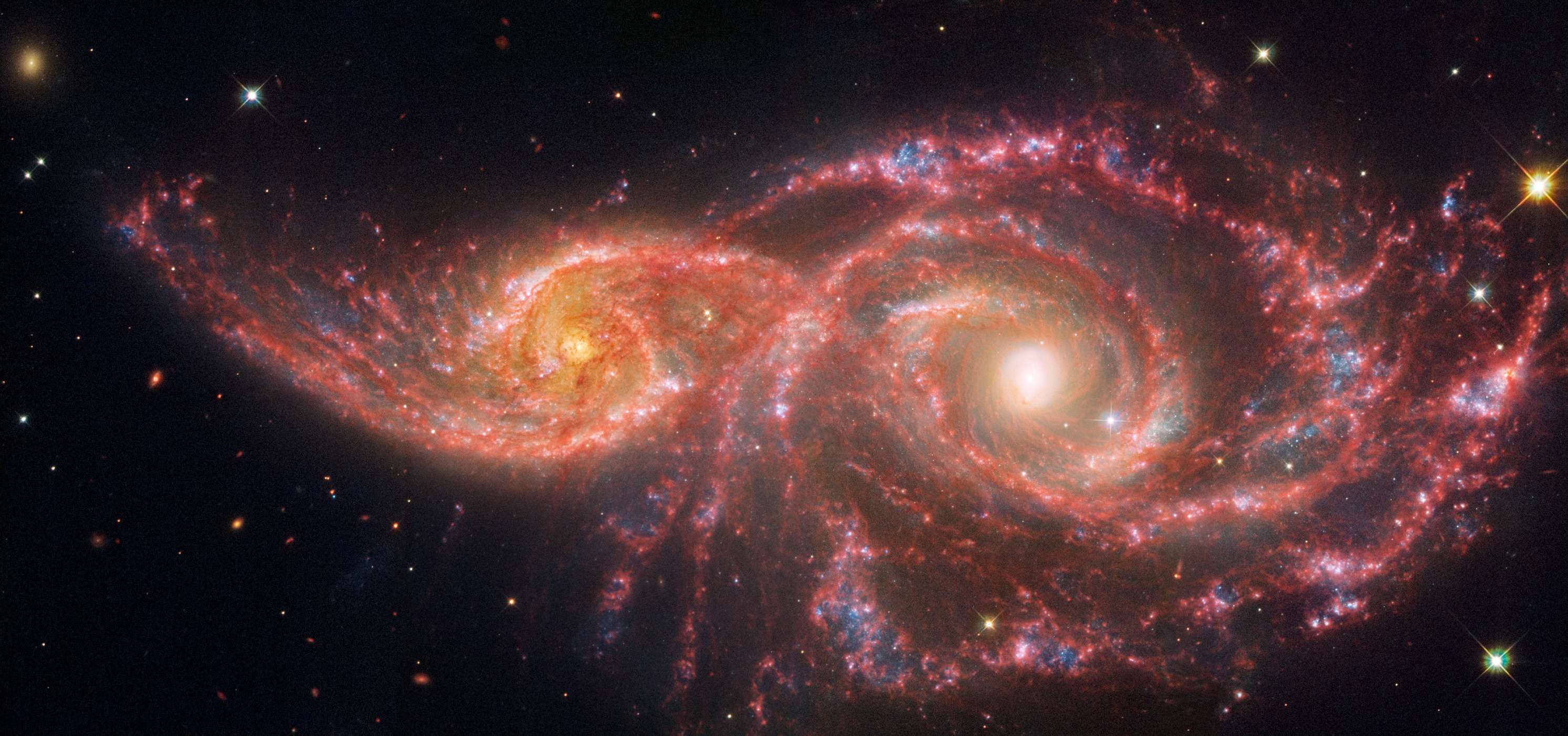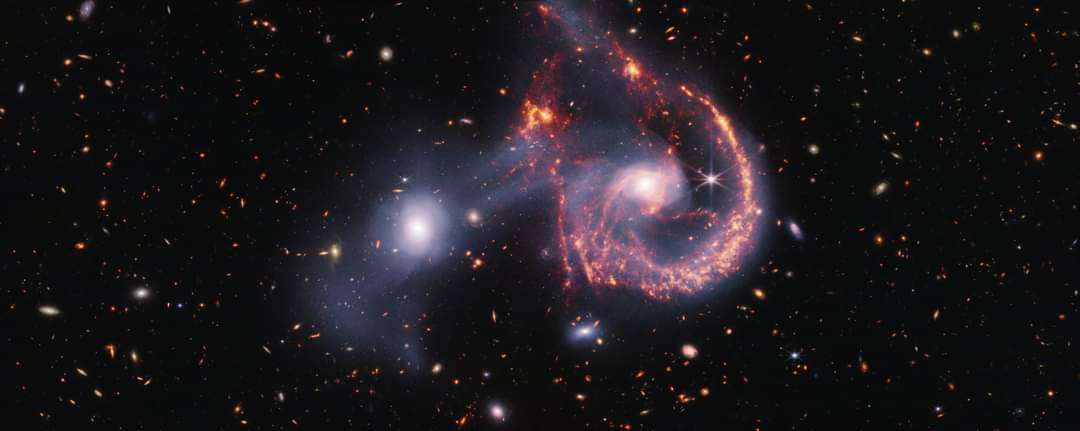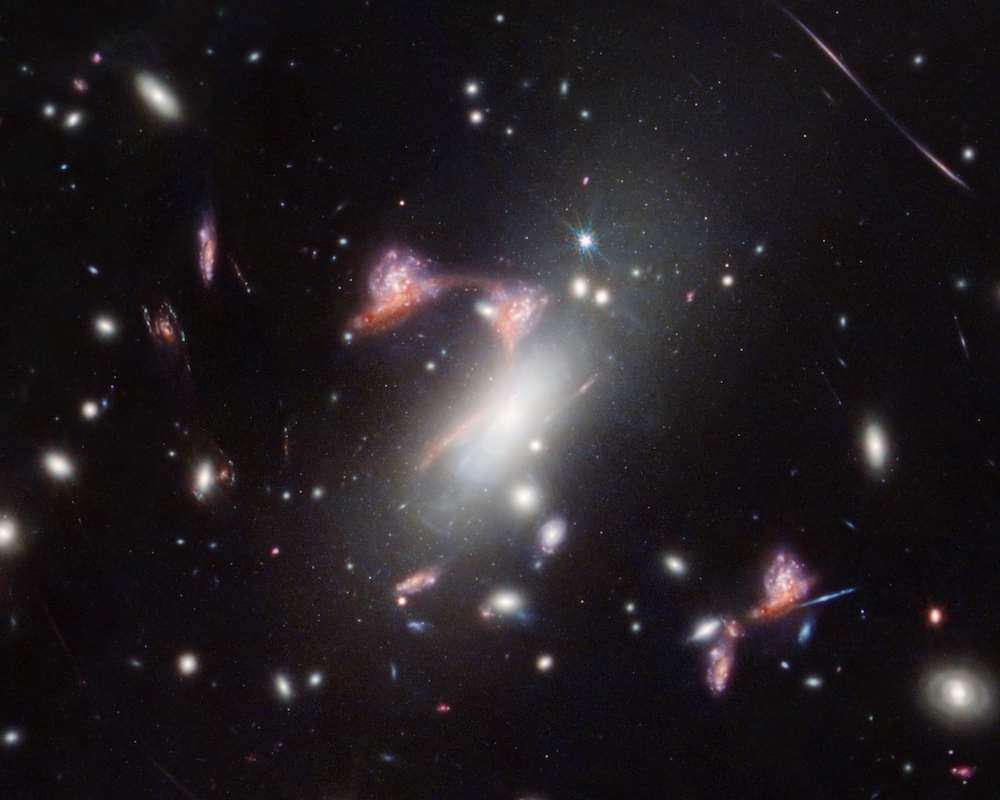🎃 Ever feel like you’re being watched? 👀
In the spirit of Halloween, this striking image unveils a cosmic pair of "eyes" peering through the universe. The haunting sight combines data from both the James Webb Space Telescope and the Hubble Space Telescope, showcasing the cores of two galaxies locked in a celestial dance.
On the left, the smaller spiral galaxy, IC 2163, is stealthily moving behind its larger partner, NGC 2207. These galaxies may continue this gravitational tango for millions of years, passing close enough to alter their shapes and create an even brighter, cyclops-like eye at their core.
What makes this image truly eerie is its blend of mid-infrared light from Webb and ultraviolet and visible light from Hubble, creating a palette perfect for Halloween. These galaxies are also star-making machines—forming the equivalent of two dozen new stars the size of our Sun each year. By comparison, our Milky Way only produces two or three Sun-sized stars per year!
🔭 A chilling reminder that the universe is full of wonders waiting to be uncovered.
Image Credit: NASA, ESA, CSA, STScI
#galacticdance #spaceexploration #cosmicwonder #jameswebbtelescope #hubbletelescope #astronomy #webb #universe

 News Feed
News Feed  Albums
Albums  Popular Posts
Popular Posts  Memories
Memories  Pokes
Pokes  Blog
Blog  Market
Market  Directory
Directory  Events
Events  Games
Games  Jobs
Jobs  Offers
Offers  Find friends
Find friends  Common Things
Common Things  Fundings
Fundings 


